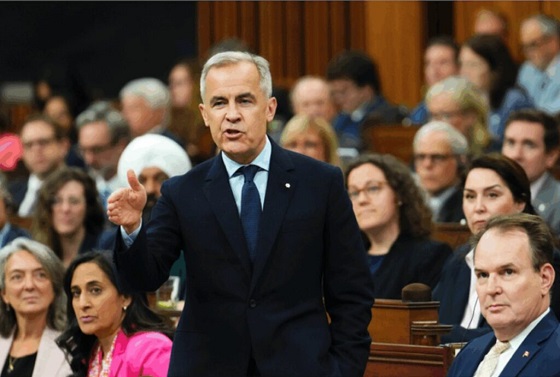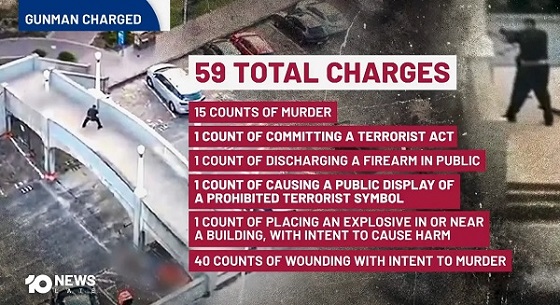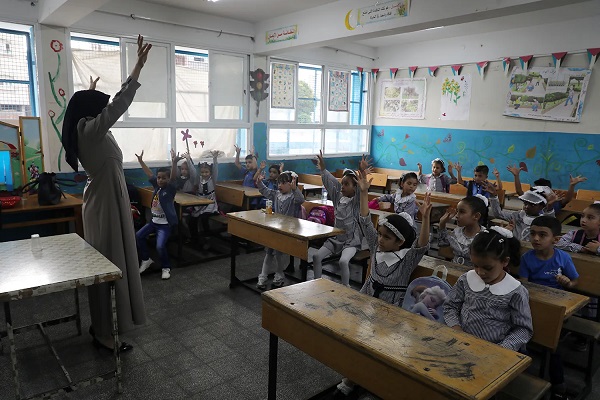Education
Kathleen Finnigan appointed new Superintendent of Red Deer Catholic Regional Schools

From Red Deer Catholic Regional Schools
Red Red Deer Catholic Regional Schools is delighted to announce the appointment of Mrs. Kathleen Finnigan as the division’s new Superintendent of Schools.
“Over the past four months, the Board of Trustees has been conducting a nationwide search for a new Superintendent of Schools. A key component of the process involved reaching out to key stakeholders to gather their thoughts and opinions regarding the new superintendent,” said Kim Pasula, Board Chair at Red Deer Regional Schools.
“The input received from the consultation, that involved engagement with all staff and parents and guardians in the Division, as well as key stakeholders from our broader community, was central to the recruitment and selection process.”
Finnigan has a Bachelor of Education from the University of Alberta, a Master of Education from San Diego State University and is currently working on a Doctorate of Education specializing in K-12 education leadership through the University of Calgary.
Finnigan grew up and graduated in Delburne, a small town east of Red Deer. She comes from a large farming family in which she is one of six girls along with one brother. Finnigan values community. She was taught the importance of community from her parents who were role models of servant leadership with their work in Delburne, Central Alberta and on the provincial scene. Finnigan believes in the saying, “It takes a village to raise a child” and is looking forward to working in a team to enhance the Red Deer Catholic community whereby students will continue to be the center of all decisions. Finnigan and her husband, Terry, have four boys all educated in Red Deer Catholic Regional Schools.
Finnigan has 34 years of experience as a professional Catholic educator within the division in the roles as teacher, counsellor, school administrator and senior administrator. She has been part of five different school communities in Red Deer: St. Thomas Aquinas Middle School, Maryview School, Holy Family School, St. Martin de Porres School and St. Patrick’s Community School. Finnigan’s first principalship was at St. Martin’s where she worked in a team with a variety of stakeholders to develop the first fine arts school in Central Alberta.
For the past nine years, she has been a member of a senior leadership team holding the positions of Associate Superintendent of Inclusive Learning, Associate Superintendent of Personnel and Acting Superintendent of Schools. Finnigan will continue to foster gospel centred school communities of hope within our division through her connections with staff and stakeholders. She is an active member of St. Mary’s Catholic Church as proclaimer, eucharistic minister and children’s liturgy teacher.
Over the years, she has won many awards including Women of Excellence for Central Alberta (2016), Canada’s Outstanding Principal (2010), Alberta’s Excellence in Teaching Semi-Finalist (2009), Leadership Award from the Council of School Administrators (2001) and Health and Physical Education Award through the HPEC Council (1989).
At today’s Board Meeting, the Board of Trustees will vote on a motion to seek the approval of the Minister of Education to appoint Finnigan as Superintendent of Schools. As per the Education Act, the Minister of Education approves all Superintendent hires and contracts.
The employment of the former Superintendent was concluded by the Board of Trustees in February 2020 and at that time Finnigan was appointed Acting Superintendent of Schools. Since then, she has navigated the division through the COVID-19 pandemic (school closures, at-home learning and school re-entry of in-person learning) and the new funding model from Alberta Education.
“I am blessed to have been appointed Superintendent at Red Deer Catholic Regional Schools; a school division known for exemplary staff and school administrators working together to ensure that Christ is known to students while aspiring to excellence. Alongside the Board of Trustees and staff we will continue to foster gospel centred communities of hope through communication, collaboration, and innovation as we lead our school communities together,” said Superintendent, Kathleen Finnigan at Red Deer Catholic Regional Schools.
“Kathleen was chosen in a highly competitive selection process from a strong field of candidates. She is a highly impressive talent known for her collaborative leadership style that will serve her and our entire staff well in advancing the mission of Red Deer Catholic Regional Schools to make Christ known to children,” said Pasula.
Red Deer Catholic Regional Schools serves over 10,360 students in 20 schools in Red Deer, Blackfalds, Sylvan Lake, Rocky Mountain House, Innisfail, and Olds, as well as an at-home learning program. It also supports the learning of over 1095 students in a Traditional Home Education Program. The Division is committed to serving children and parents with a complete offering of learning opportunities delivered within the context of Catholic teachings and within the means of the Division.
Alberta
Schools should go back to basics to mitigate effects of AI

From the Fraser Institute
Odds are, you can’t tell whether this sentence was written by AI. Schools across Canada face the same problem. And happily, some are finding simple solutions.
Manitoba’s Division Scolaire Franco-Manitobaine recently issued new guidelines for teachers, to only assign optional homework and reading in grades Kindergarten to six, and limit homework in grades seven to 12. The reason? The proliferation of generative artificial intelligence (AI) chatbots such as ChatGPT make it very difficult for teachers, juggling a heavy workload, to discern genuine student work from AI-generated text. In fact, according to Division superintendent Alain Laberge, “Most of the [after-school assignment] submissions, we find, are coming from AI, to be quite honest.”
This problem isn’t limited to Manitoba, of course.
Two provincial doors down, in Alberta, new data analysis revealed that high school report card grades are rising while scores on provincewide assessments are not—particularly since 2022, the year ChatGPT was released. Report cards account for take-home work, while standardized tests are written in person, in the presence of teaching staff.
Specifically, from 2016 to 2019, the average standardized test score in Alberta across a range of subjects was 64 while the report card grade was 73.3—or 9.3 percentage points higher). From 2022 and 2024, the gap increased to 12.5 percentage points. (Data for 2020 and 2021 are unavailable due to COVID school closures.)
In lieu of take-home work, the Division Scolaire Franco-Manitobaine recommends nightly reading for students, which is a great idea. Having students read nightly doesn’t cost schools a dime but it’s strongly associated with improving academic outcomes.
According to a Programme for International Student Assessment (PISA) analysis of 174,000 student scores across 32 countries, the connection between daily reading and literacy was “moderately strong and meaningful,” and reading engagement affects reading achievement more than the socioeconomic status, gender or family structure of students.
All of this points to an undeniable shift in education—that is, teachers are losing a once-valuable tool (homework) and shifting more work back into the classroom. And while new technologies will continue to change the education landscape in heretofore unknown ways, one time-tested winning strategy is to go back to basics.
And some of “the basics” have slipped rapidly away. Some college students in elite universities arrive on campus never having read an entire book. Many university professors bemoan the newfound inability of students to write essays or deconstruct basic story components. Canada’s average PISA scores—a test of 15-year-olds in math, reading and science—have plummeted. In math, student test scores have dropped 35 points—the PISA equivalent of nearly two years of lost learning—in the last two decades. In reading, students have fallen about one year behind while science scores dropped moderately.
The decline in Canadian student achievement predates the widespread access of generative AI, but AI complicates the problem. Again, the solution needn’t be costly or complicated. There’s a reason why many tech CEOs famously send their children to screen-free schools. If technology is too tempting, in or outside of class, students should write with a pencil and paper. If ChatGPT is too hard to detect (and we know it is, because even AI often can’t accurately detect AI), in-class essays and assignments make sense.
And crucially, standardized tests provide the most reliable equitable measure of student progress, and if properly monitored, they’re AI-proof. Yet standardized testing is on the wane in Canada, thanks to long-standing attacks from teacher unions and other opponents, and despite broad support from parents. Now more than ever, parents and educators require reliable data to access the ability of students. Standardized testing varies widely among the provinces, but parents in every province should demand a strong standardized testing regime.
AI may be here to stay and it may play a large role in the future of education. But if schools deprive students of the ability to read books, structure clear sentences, correspond organically with other humans and complete their own work, they will do students no favours. The best way to ensure kids are “future ready”—to borrow a phrase oft-used to justify seesawing educational tech trends—is to school them in the basics.
Business
Why Does Canada “Lead” the World in Funding Racist Indoctrination?
-

 Business2 days ago
Business2 days agoOttawa Pretends To Pivot But Keeps Spending Like Trudeau
-

 International2 days ago
International2 days agoBondi Beach Shows Why Self-Defense Is a Vital Right
-

 Crime1 day ago
Crime1 day agoBondi Beach Survivor Says Cops Prevented Her From Fighting Back Against Terrorists
-

 Automotive1 day ago
Automotive1 day agoFord’s EV Fiasco Fallout Hits Hard
-

 Energy2 days ago
Energy2 days agoLiberals Twisted Themselves Into Pretzels Over Their Own Pipeline MOU
-

 Censorship Industrial Complex2 days ago
Censorship Industrial Complex2 days agoHow Wikipedia Got Captured: Leftist Editors & Foreign Influence On Internet’s Biggest Source of Info
-

 Crime2 days ago
Crime2 days agoThe Uncomfortable Demographics of Islamist Bloodshed—and Why “Islamophobia” Deflection Increases the Threat
-

 Frontier Centre for Public Policy17 hours ago
Frontier Centre for Public Policy17 hours agoCanada Lets Child-Porn Offenders Off Easy While Targeting Bible Believers












